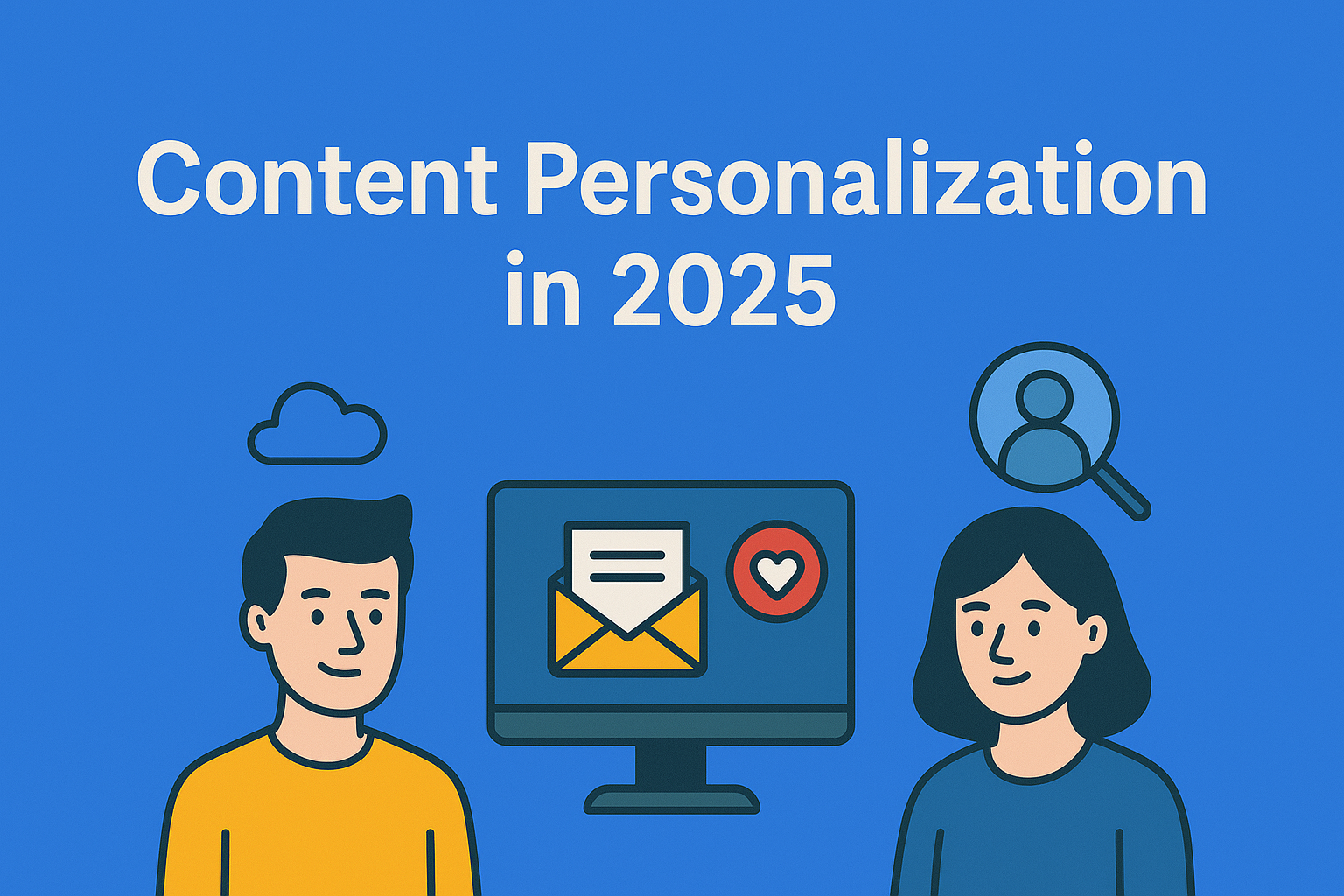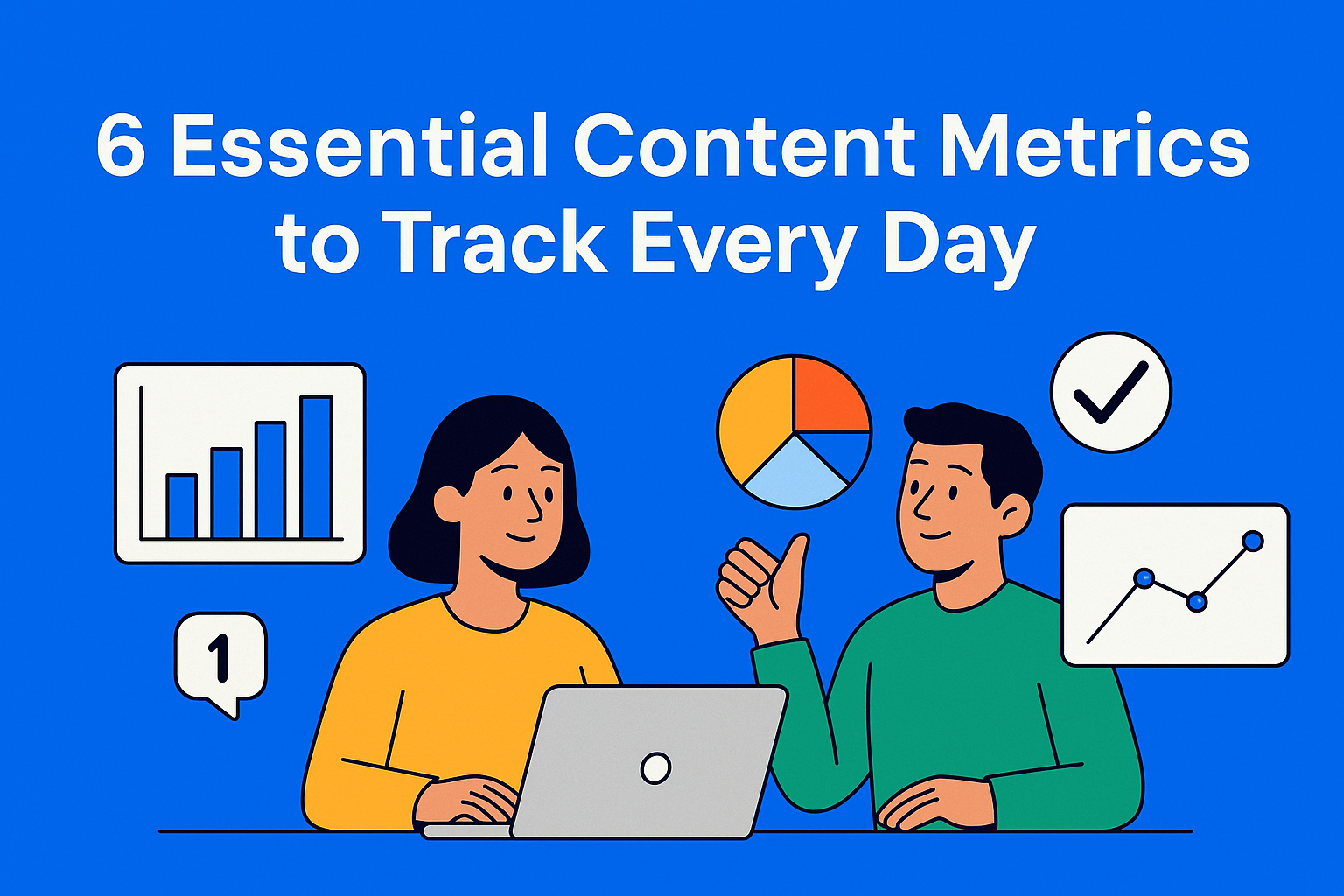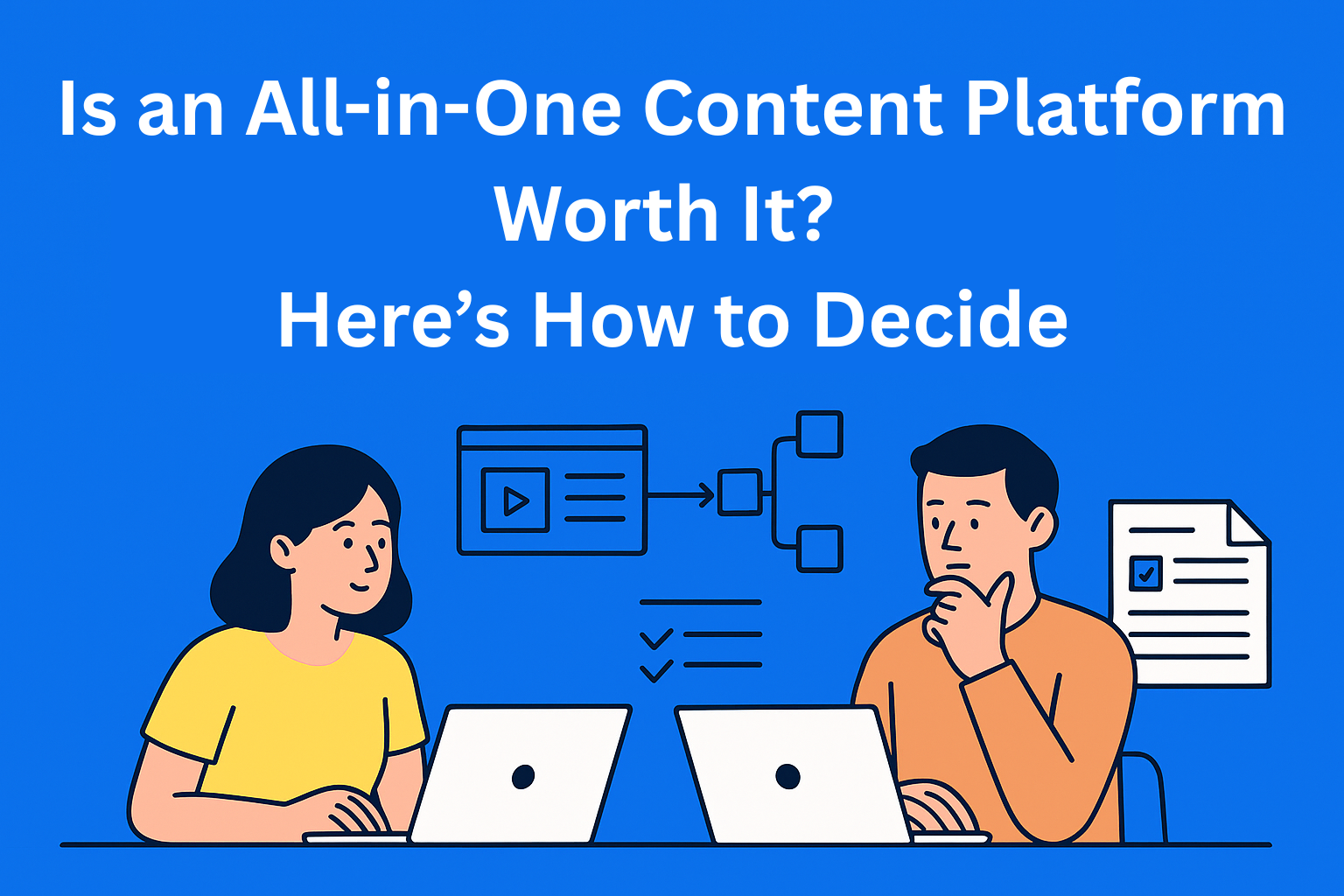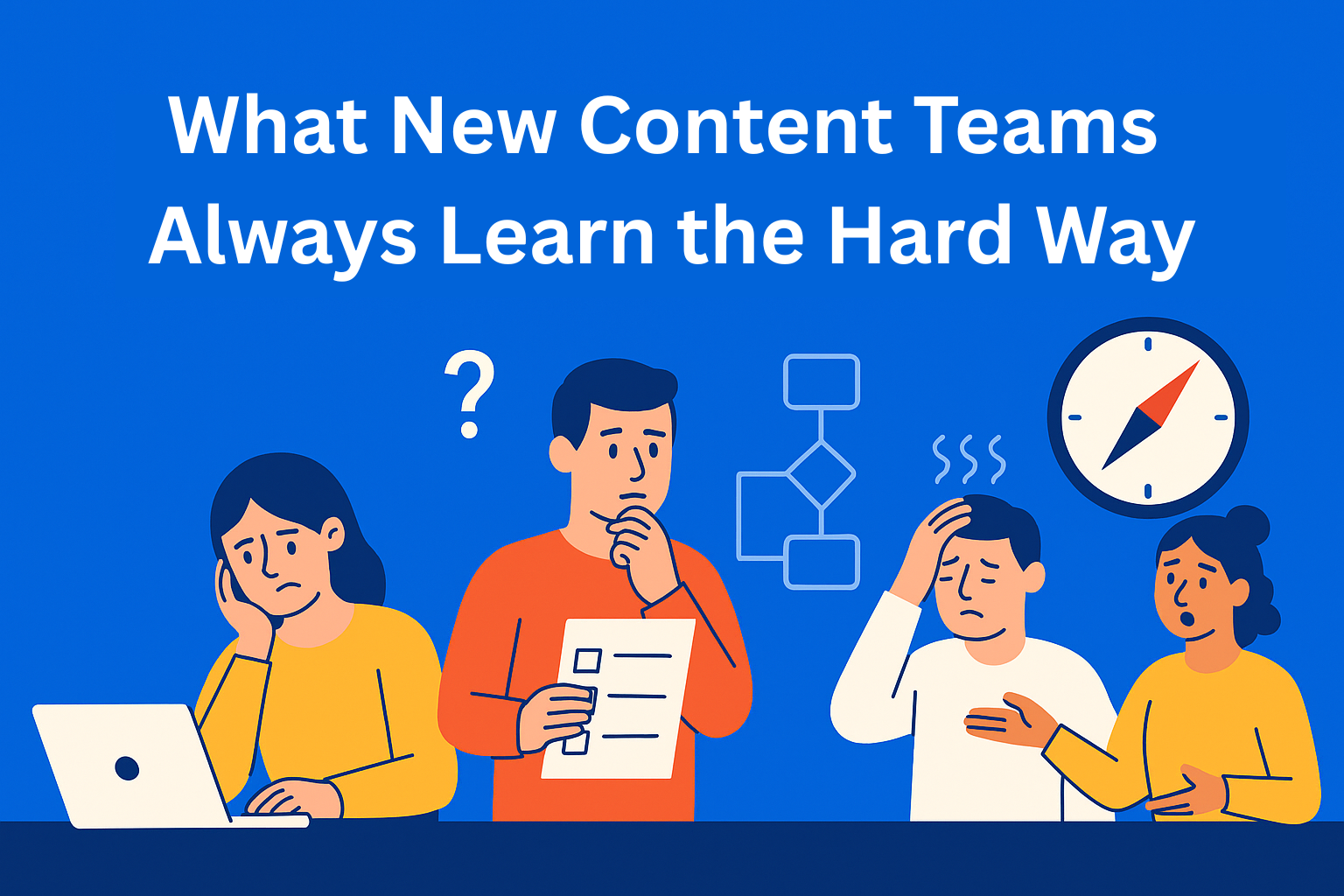What is Content Personalization and How to Do It Right in 2025
Still writing one-size-fits-all content in 2025? Yikes. Discover how content personalization makes your brand actually feel human, with strategies, tools, and real-world inspo to help you connect, convert, and not lose your mind in the process.

Alright, let’s be honest for a moment. The internet is noisy, in real-life terms, like Times Square on New Year’s Eve noisy. If you're still rocking the “one-size-fits-all” content, you’re not just falling behind, it’s like using a flip phone in a 5G era.
Welcome to the age of content personalization. This isn’t some marketing trick. It’s what’s happening behind the scenes of the brands you actually remember. You know, the ones that feel like they truly understand you.
So, is your content treating everyone the same? Because if it is, we’ve got some “unlearning” to do.
Key Takeaways
- Personalization goes beyond first names - It’s about relevance, timing, and making content feel tailor-made.
- Generic = forgotten - Customized content builds trust, engagement, and higher conversions.
- There’s more than one way to personalize - Use behavior, location, purchase history, and engagement levels.
- You don’t need 37 tools - A few good ones like EasyContent, ActiveCampaign, and Dynamic Yield go a long way.
- Bad personalization backfires - Overdoing it or ignoring privacy will alienate your audience.
- Start with the data you already have - Then expand with smart automation and role-based workflows.
- Look to brands that do it well - Netflix, Spotify, Amazon-they personalize with precision and consistency.
- It’s expected in 2025, not optional - Treating everyone the same won’t work in a personalized content era.
1. What is Content Personalization? (No, it’s not just using someone’s [first_name])
Content personalization means adjusting your content - emails, blogs, landing pages - to deliver exactly what a person wants or needs at that moment.
It’s not the same as segmentation. Segmentation is grouping. Personalization is tailoring. Like the difference between buying a size L shirt and going to a tailor who adjusts it to your shoulders, your style, etc..
You’ve definitely seen it in action. For example, a newsletter that recommends products based on your last binge purchase. Or a blog homepage that changes depending on whether you’re a newbie or a loyal fan. Or maybe even Netflix somehow knowing you’re in your “villain era” and serving you dark thrillers all weekend.
The point? Content personalization strategies make content feel less like shouting and more like a conversation.
2. Why Content Personalization Matters (a.k.a. why should you care)
You know those emails that say “Hi [Name]” but sound like they were written for somebody else? Yeah, that’s bad personalization.
When done right, it delivers seriously strong results.
For instance:
Personalized emails see 6 times higher open rates.
Personalized calls-to-action convert 202% better.
And users spend 60% more time on-site when the content feels relevant.
In short: readers feel special. And people who feel special? They click, they buy, they stick around. Think of it as digital hospitality.
In 2025, personalized content isn’t optional. It’s expected. You want loyal users, not bounce rates.
3. Types of Content Personalization (or: pick your flavor)
Some personalize based on user behavior - you watched this, so you might like that. Others use location - “Hola” for Spain, “Howdy” for Texas. Some respond to purchase history - you bought sneakers, want socks? And some rely on engagement level - new visitors get a welcome tour, while loyal customers get exclusives.
All of these methods make content feel like it was made just for that person. And that’s important.
Start with the data you already have. Build from there.
4. How to Implement Personalization Without Losing Your Mind
You don’t need an AI overlord or a team of 37 data scientists. You need a few good tools, solid data, and a plan that doesn’t involve duct tape and last-minute edits.
First, collect data - site behavior, CRM info, user preferences - then build personas. Finally, use automation tools - HubSpot, Segment, or whichever one keeps your team from Excel-induced meltdowns.
Then you can use EasyContent for the writing part - it lets you set up role-based workflows. That way, your writers know they’re writing for a retail lead in New York, not a healthcare exec in Toronto. And everyone stays aligned and on schedule.
5. Common Mistakes That Will Make Your Audience Side-Eye You
Look, personalization is powerful. But if used carelessly? It’s like salt. A little adds flavor. Too much? Disaster.
For example, you don’t need to say “Congrats on your third baby, Jessica” just because you can. If the email is hyper-personalized but the landing page is generic, people notice. And of course, don’t forget privacy laws. GDPR is real. So are lawsuits.
Respect the line between helpful and invasive. Be clear about what data you’re collecting and why.
6. Tools That Make Personalization Bearable
Time to meet your new content allies. EasyContent helps your team stay aligned through clearly defined roles and workflows. Dynamic Yield changes website content based on user behavior. Optimizely lets you test personalization ideas before going all in. And ActiveCampaign is great for email flows and behavioral triggers.
Invest in tools that save time and energy. More creating, less dilly-dallying.
7. Real-World Examples (because we all love receipts)
Netflix – each user’s homepage is different.
Amazon – knows your dog food, book tastes, and obsession with kitchen gadgets.
Spotify – Discover Weekly playlist that feels like your best friend made it.
HubSpot – adjusts content based on how many emails you’ve opened.
Personalized content is no longer a flex. It’s the standard. These brands just figured it out first.
Conclusion
Here’s the essence: content personalization in 2025 doesn’t depend on modern tools or trendy buzzwords, it’s about giving your audience content that’s truly relevant and useful.
Start simple. Personalize your emails. Adjust your CTAs. Segment smarter. Then layer it up.
And if you want to scale without going crazy, use a tool like EasyContent to manage the chaos.
Remember: the best content isn’t the one that just reaches someone and stops there, it’s the one that connects with them, leaves an impression, and drives action.






